Last-Minute NYC Holiday Gift Guide 🎁
We’ve created a holiday gift guide with presents for the intrepid New Yorker that should arrive just in time—


Amidst the creeks and marshes upland from Midland Beach, Staten Island are two small wooden bridges, which form the last of their kind in New York City, still allowing cars to cross over. A more elaborate one is in Gowanus, Brooklyn — the Carroll Street Bridge —which is also a retractile bridge that can open and close. The Gowanus Bridge crosses over a very industrialized, hard-edged waterway but these two wooden bridges on Staten Island blend in with their raw surroundings. You’ll hear the cawing of crows, the quacks of mallard ducks, and many more fauna in this area of Staten Island.
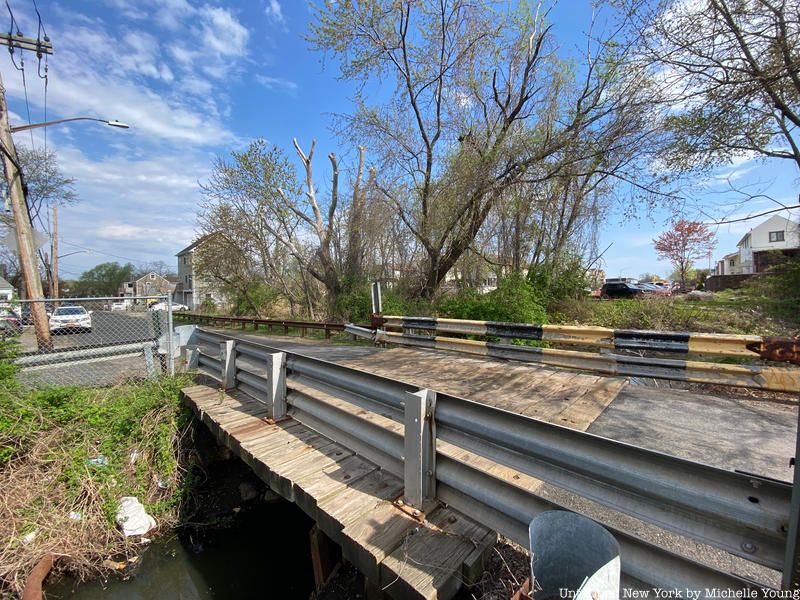
The bridges, one on Hunter Avenue and the other on Idlease Place, cross over New Creek. The bridges are made of large wide planks and are wide enough only for one car to pass at a time. If you look closely at the wood, you’ll see the natural grain and the planks’ imperfections, along with the nails that hold the bridge together. The bridge on Hunter Avenue has metal guardrails on both sides painted in yellow and black. The bridge on Idlease Place has wooden guardrails with an additional metal rail affixed on top.
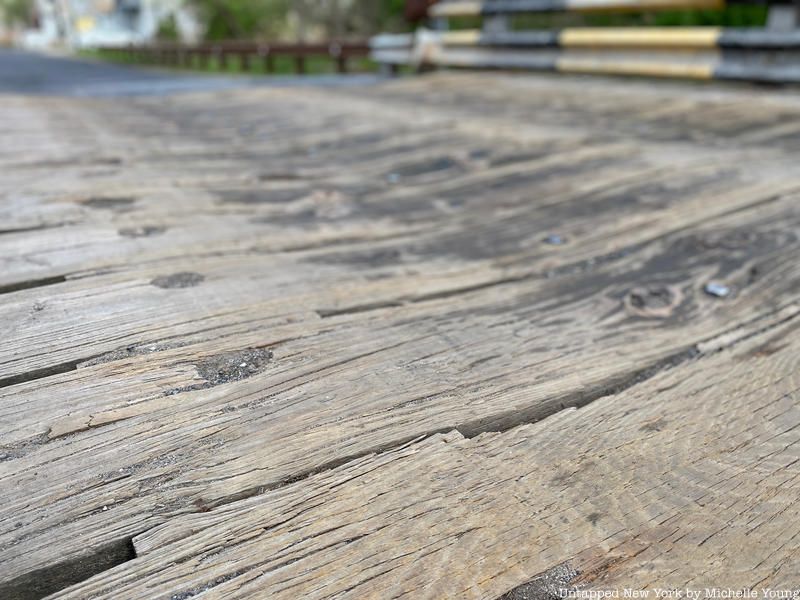
Up here, where the creek ends, the waterway is fairly narrow, its edges filled with unmanaged brush. Suburban houses line the creek, either open onto it or with fences or concrete walls along the shoreline. If you follow the creek from the two bridges. it runs between Hunter Avenue and Adams Avenue, after which it opens up onto a fairly vast marshland which you can view along Nugent Avenue. Just before New Creek turns into Slater Creek, one tributary branches north and ends at Hyland Boulevard.
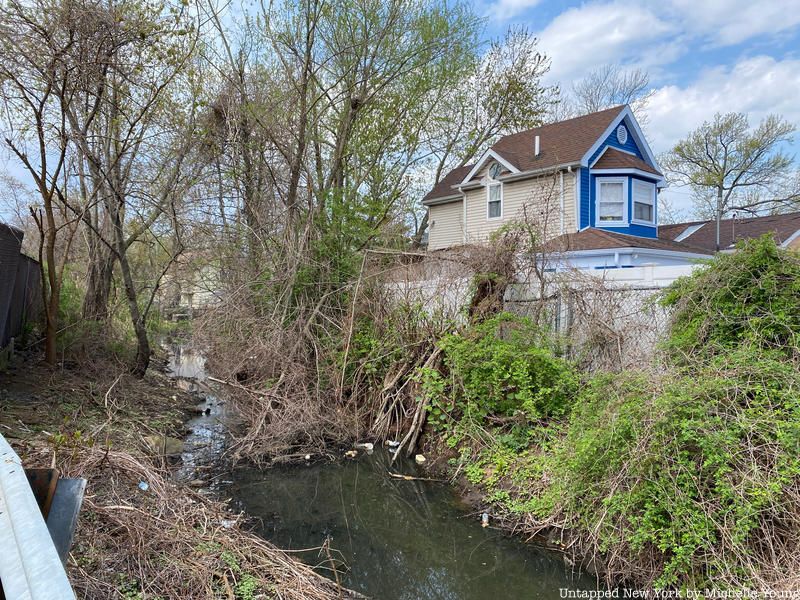
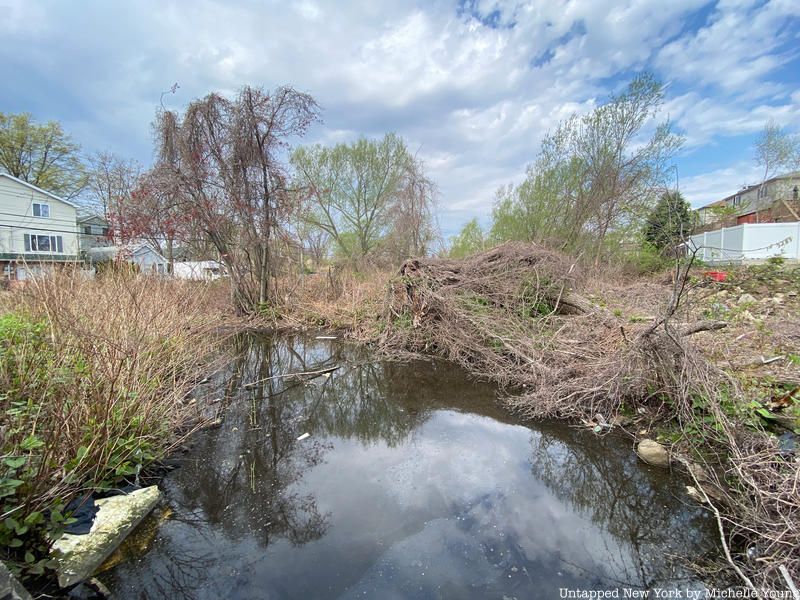
New Creek is part of the 2,200 acre New Creek Watershed now, but has been shaped by humans dating back to the Lenape Indians. As Nathan Kensinger wrote in Curbed New York in 2016, “the modern era of development on the island began in the New Creek watershed in 1661, with the establishment of the Dutch village of Oude Dorpe. This was Europe’s first permanent settlement on the island, and in the ensuing centuries, its residents shaped and reshaped the landscape of New Creek.” Most of the creeks on this land were filled in by the 1800s.
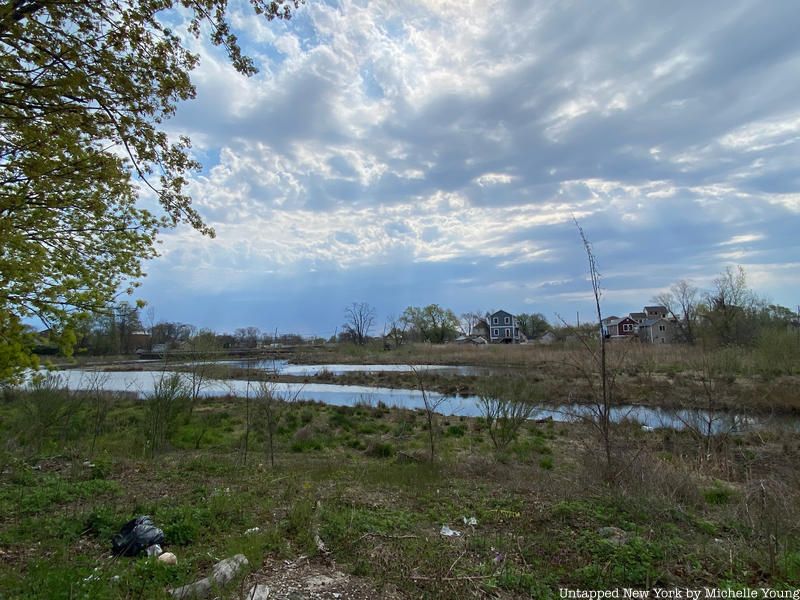
Just last October, the New York City Department of Environmental Protection and the New York City Department of Transportation announced two projects totaling $75 million. The first is a $33 million “Gateway to the Bluebelt” project which can be seen under construction along Hylan Boulevard that will “create a public viewing area and introduction to the rehabilitated New Creek wetlands.” Design initiatives will include a permeable paver walkway that ends at a stone-faced headwall which will offer views out onto the new wetland and further out into lower New York Harbor. Benches for seating will be available on the walkway along with interpretative signs and maps detailing information about the Bluebelt and the New Creek Watershed. Environmental initiatives will include the planting of 219 trees, 607 shrubs and 23,000 wildflowers and native plants, as well as wildflower seeding, and the construction of new storm sewers, new sanitary sewers, and the replacement of old cast iron pipes.
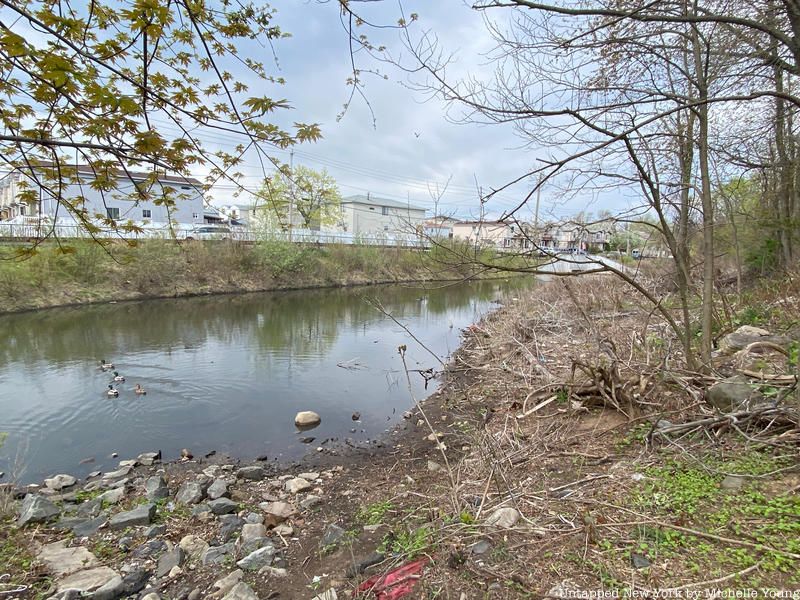
Secondly, the $42 million expansion of the New Creek Bluebelt encompasses an area 21 acres in size and will include the “largest man-made wetland in the Bluebelt system along with two outfalls, stilling basins, a micropool and a weir,” according to the NYC DEP. Other work will include the addition of more than 85,400 wildflowers and native plants, 810 native shrubs and 440 trees, and the removal of debris and other trash along with invasive Phragmites.
Staten Island was hard-hit during Hurricane Sandy and the expansion of the Bluebelt is part of a multi-pronged effort to improve storm resiliency along the borough’s coastline (as well as counteract prior interventions that reduced tidal flow and negatively impacted the ecosystem).
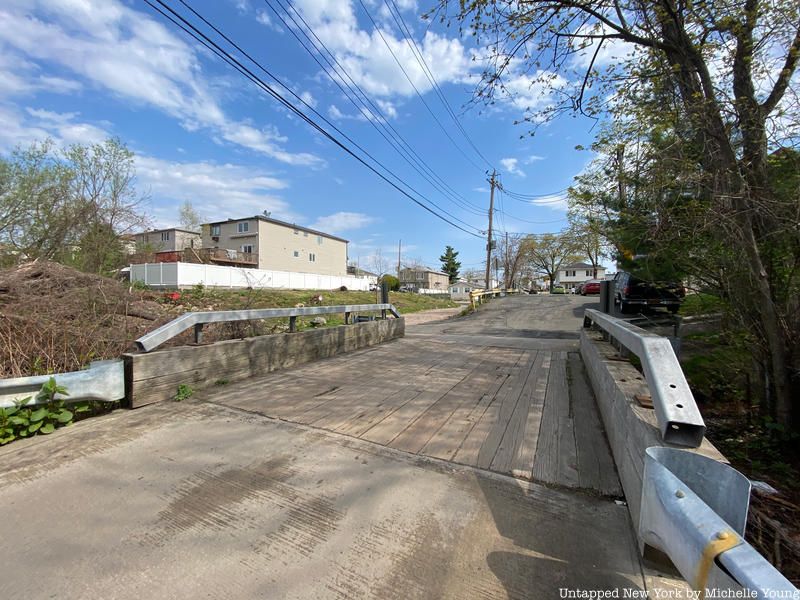
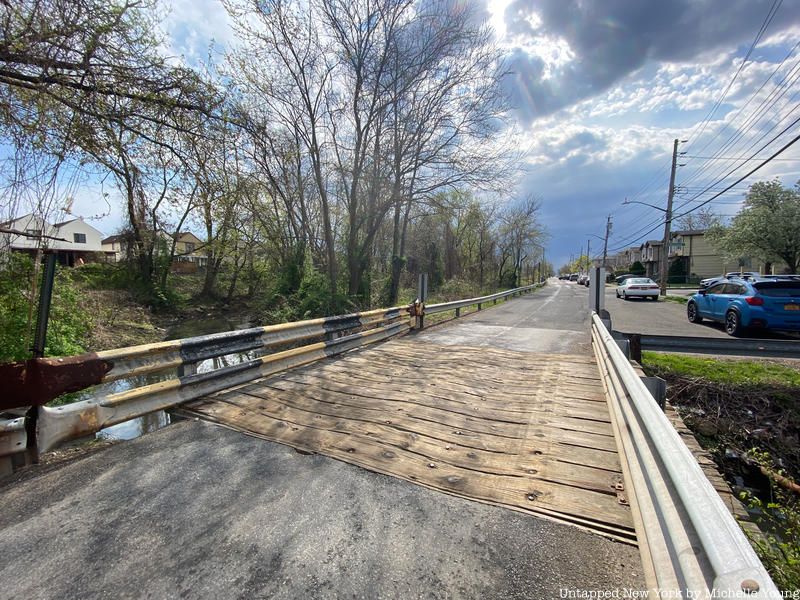
The wooden bridges on Staten Island, like most old-school New York things, are ephemeral. With renewed attention on the Bluebelt and this area, the bridges over New Creek may get an “upgrade” in the future. For now, check out (and please be respectful) of these pieces of New York City that harken back to a more rural, bygone era.
Next, check out the wooden bridge in Gowanus, Brooklyn. What other wooden bridges have you come across in New York City? Let us know on Twitter!
Subscribe to our newsletter